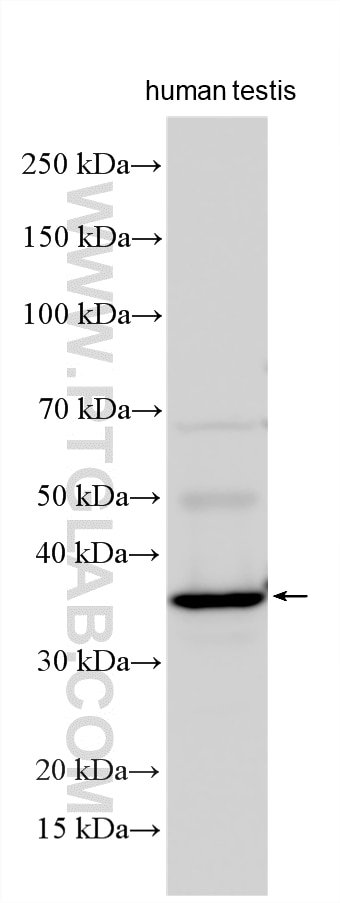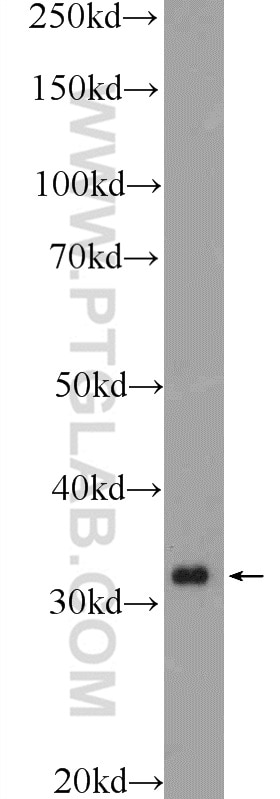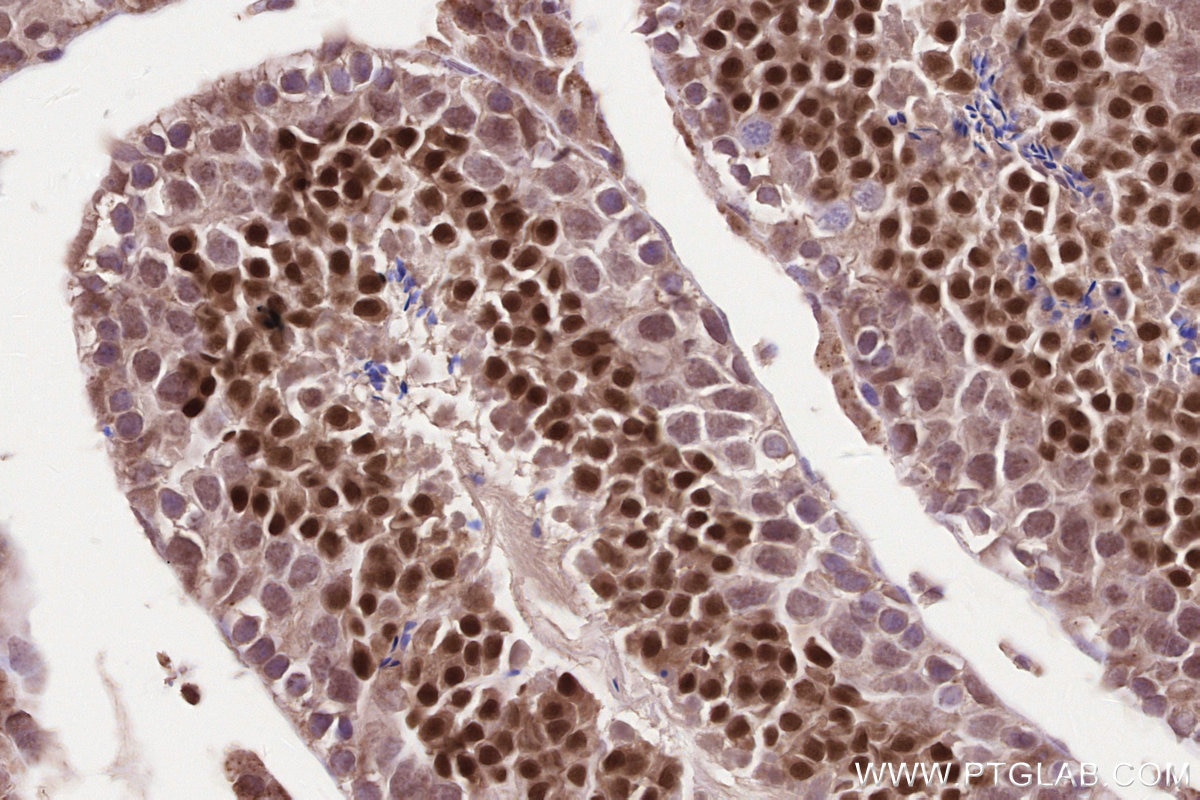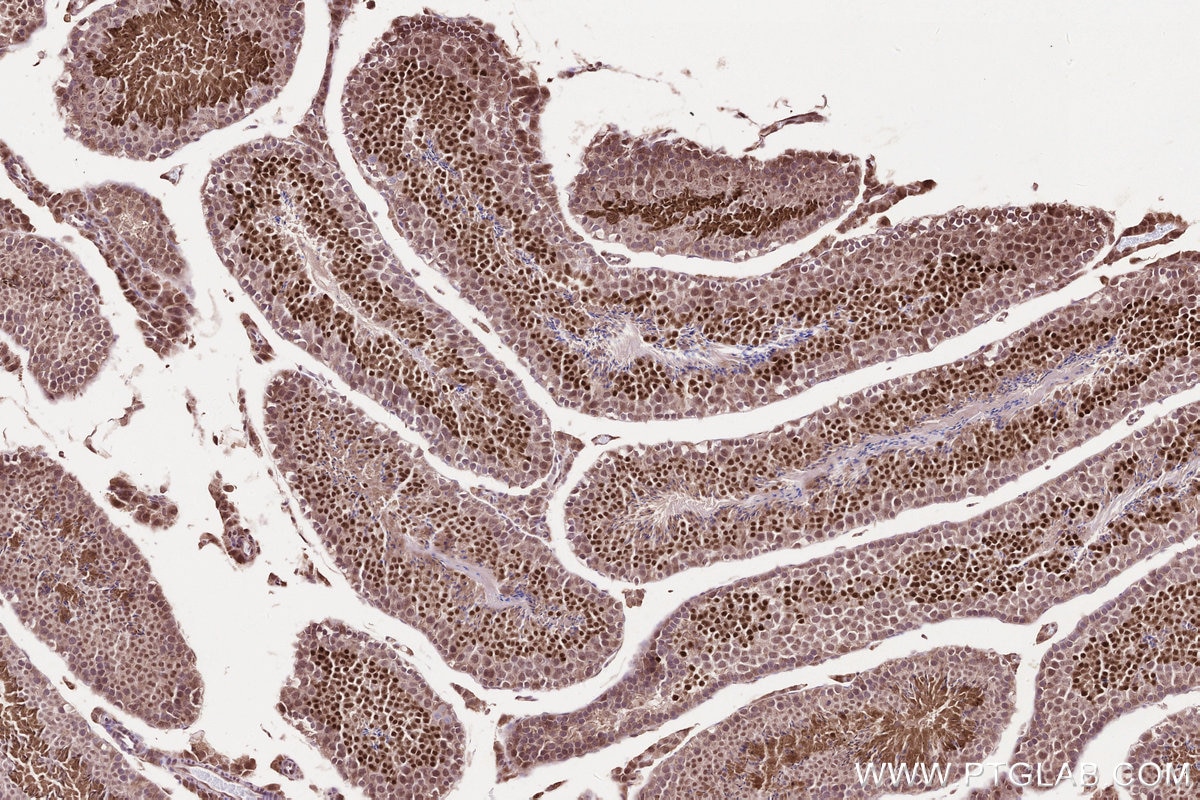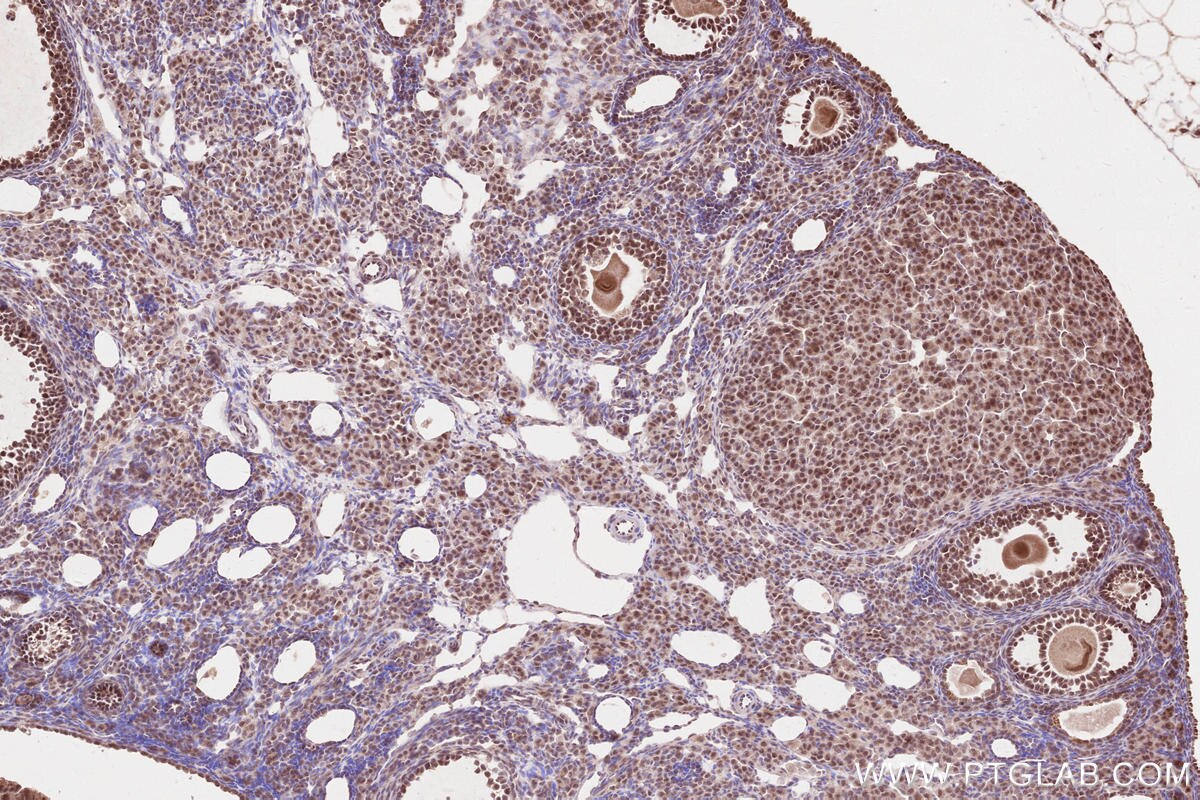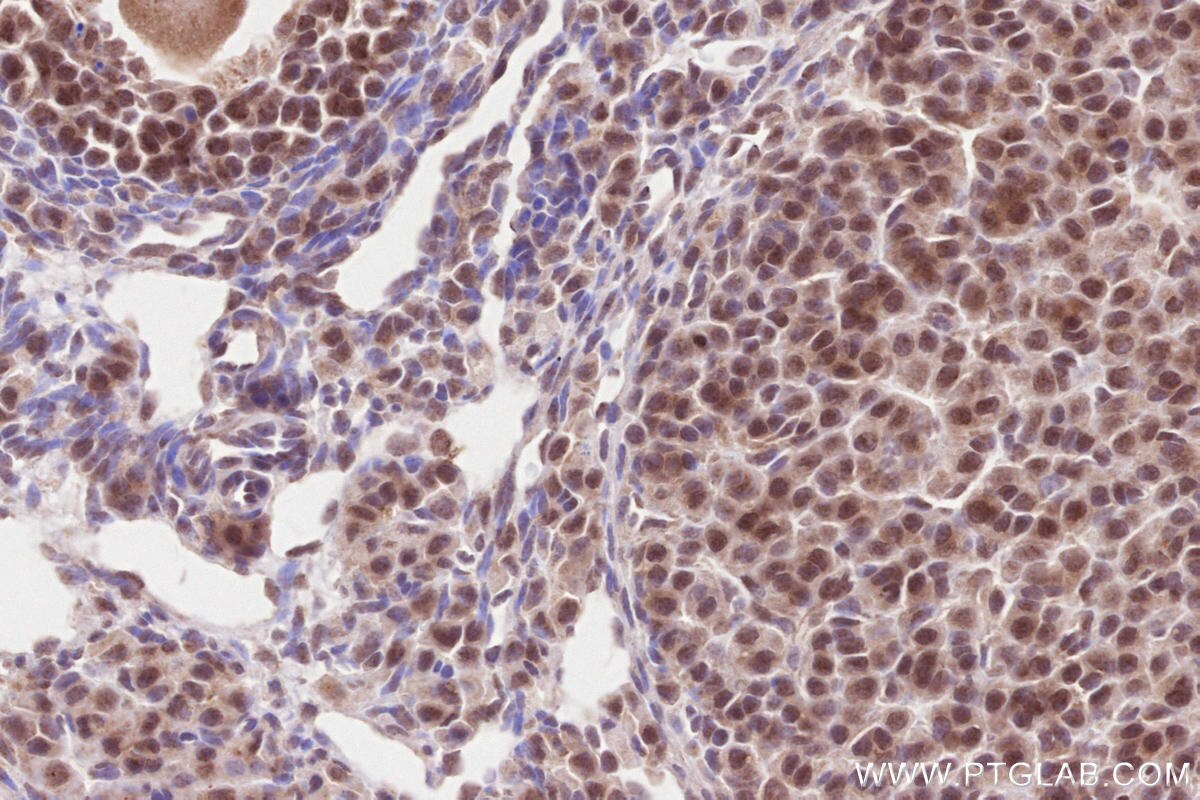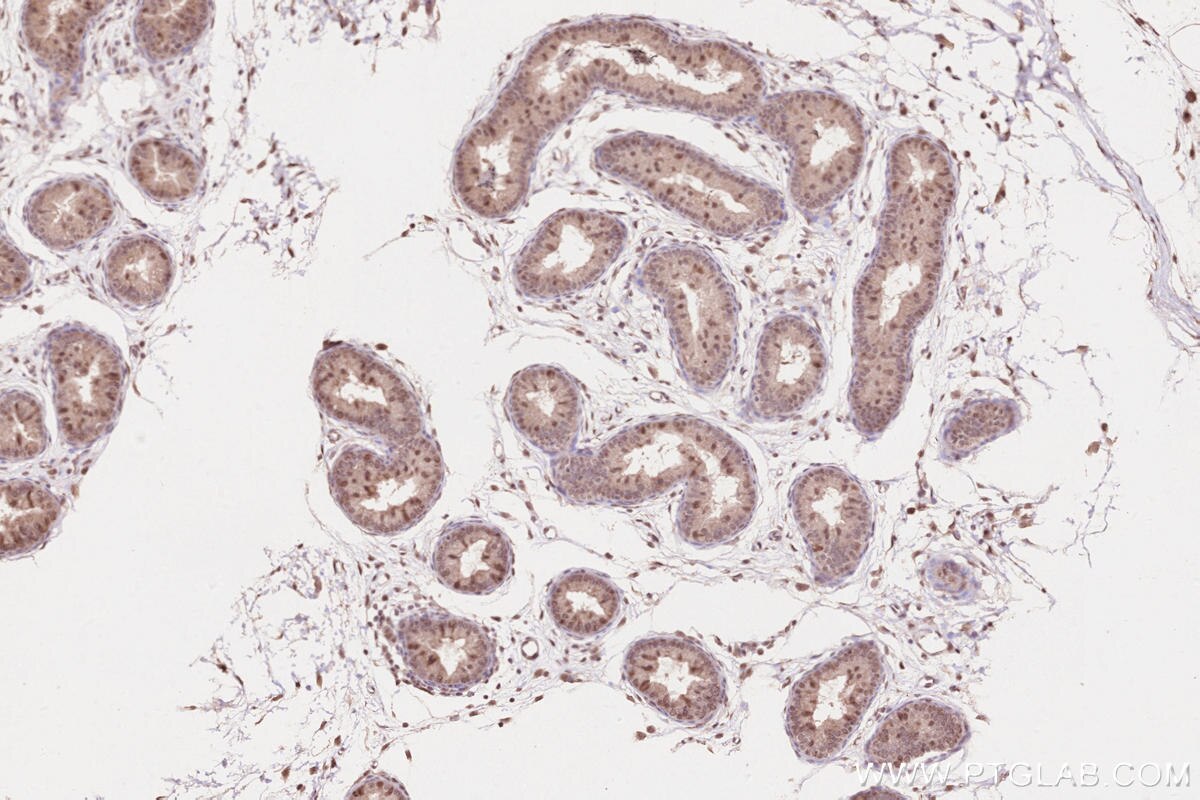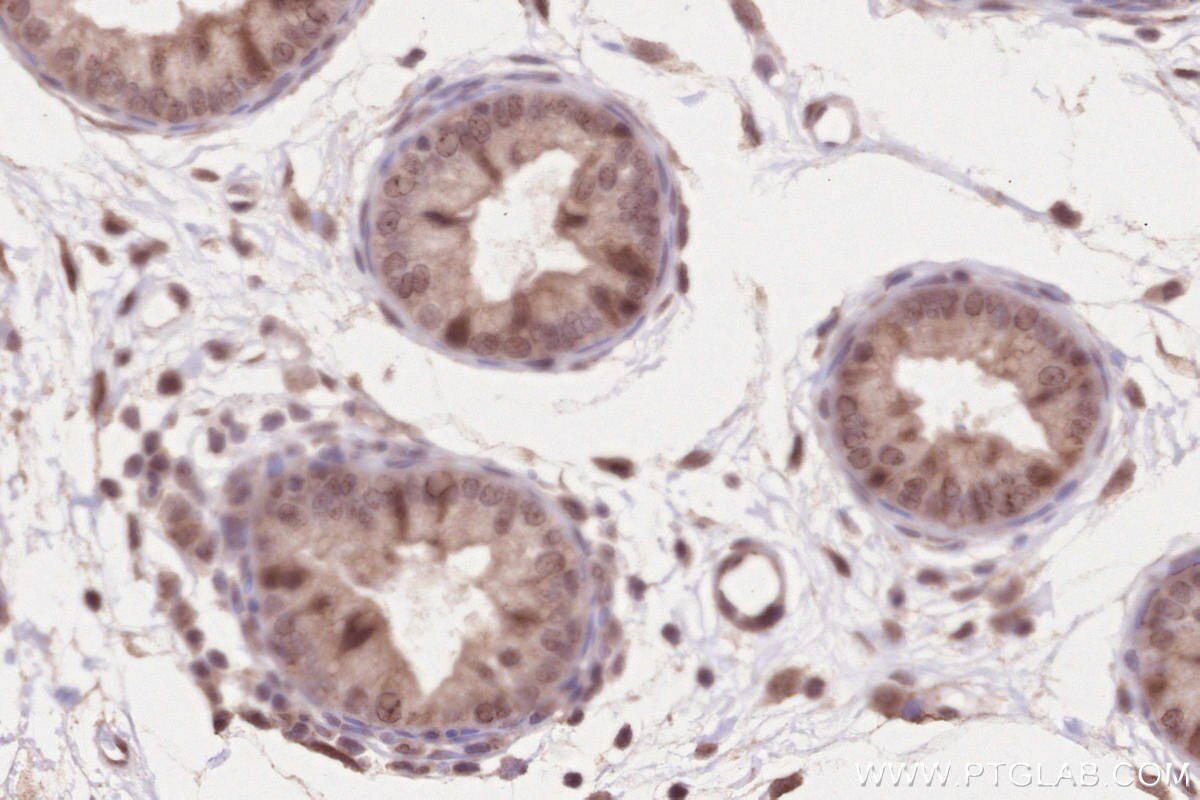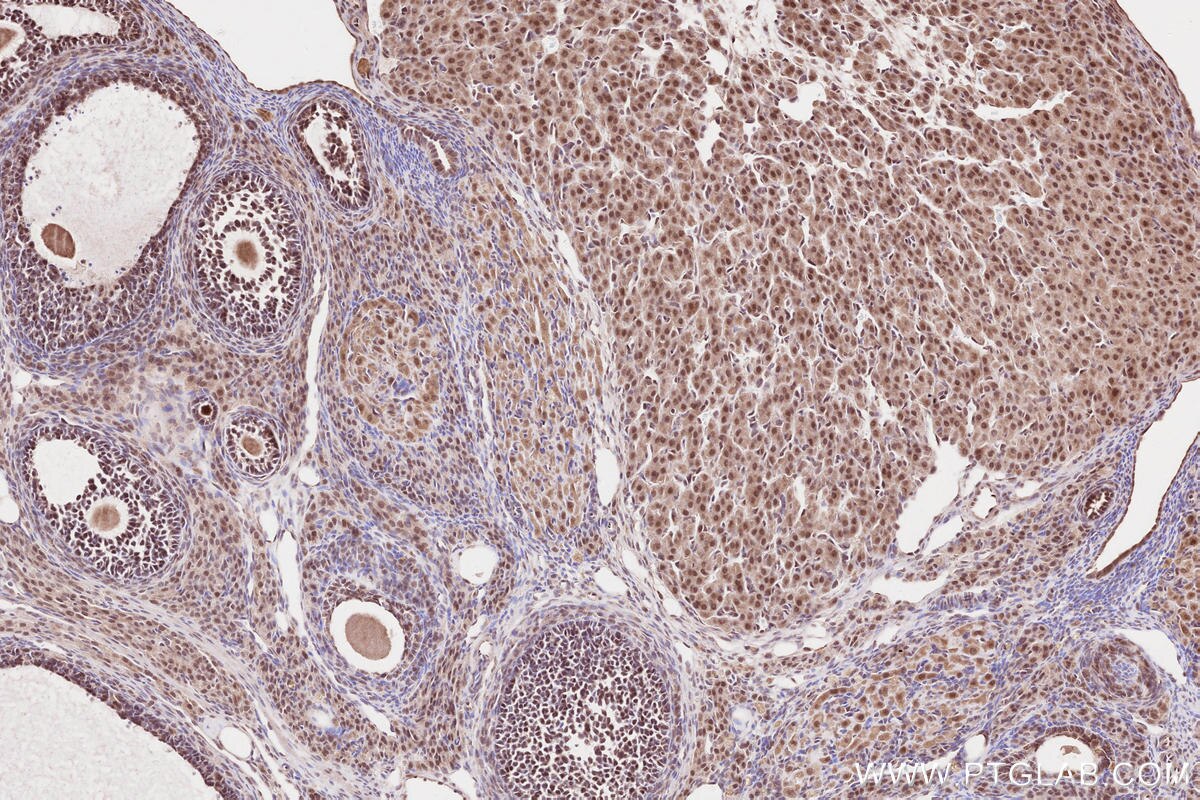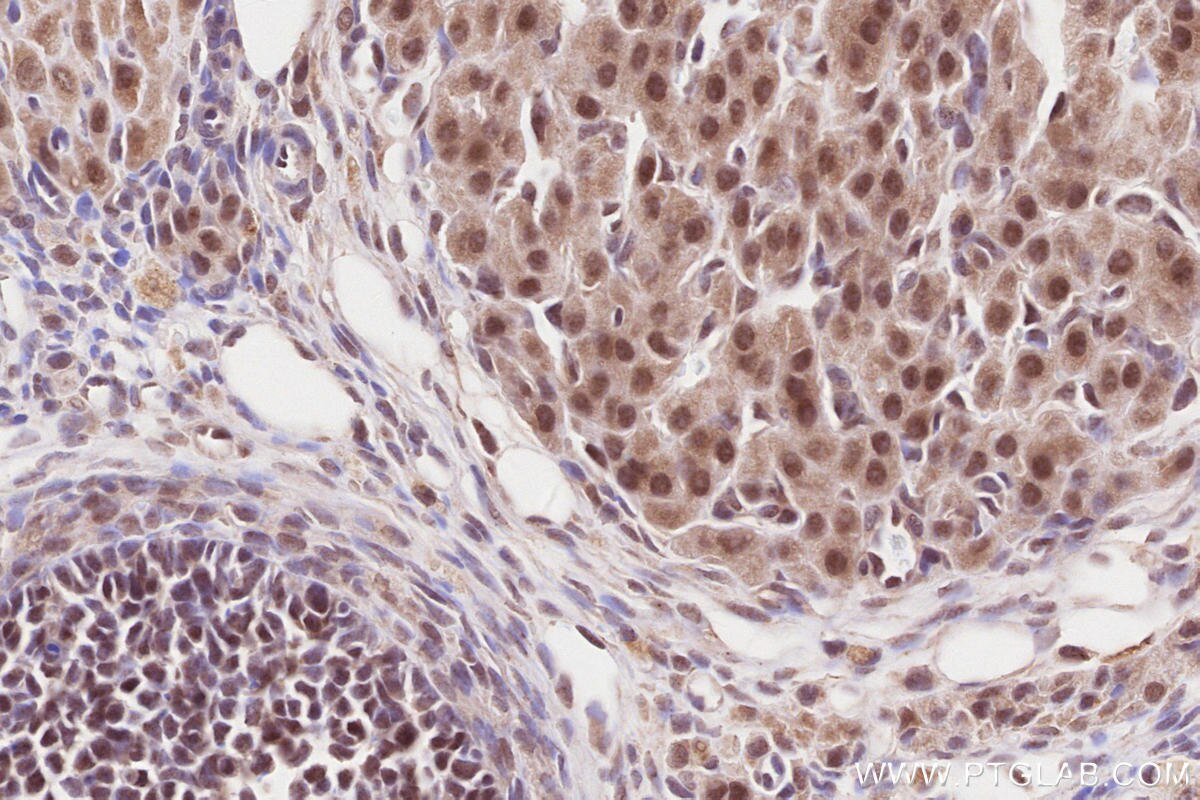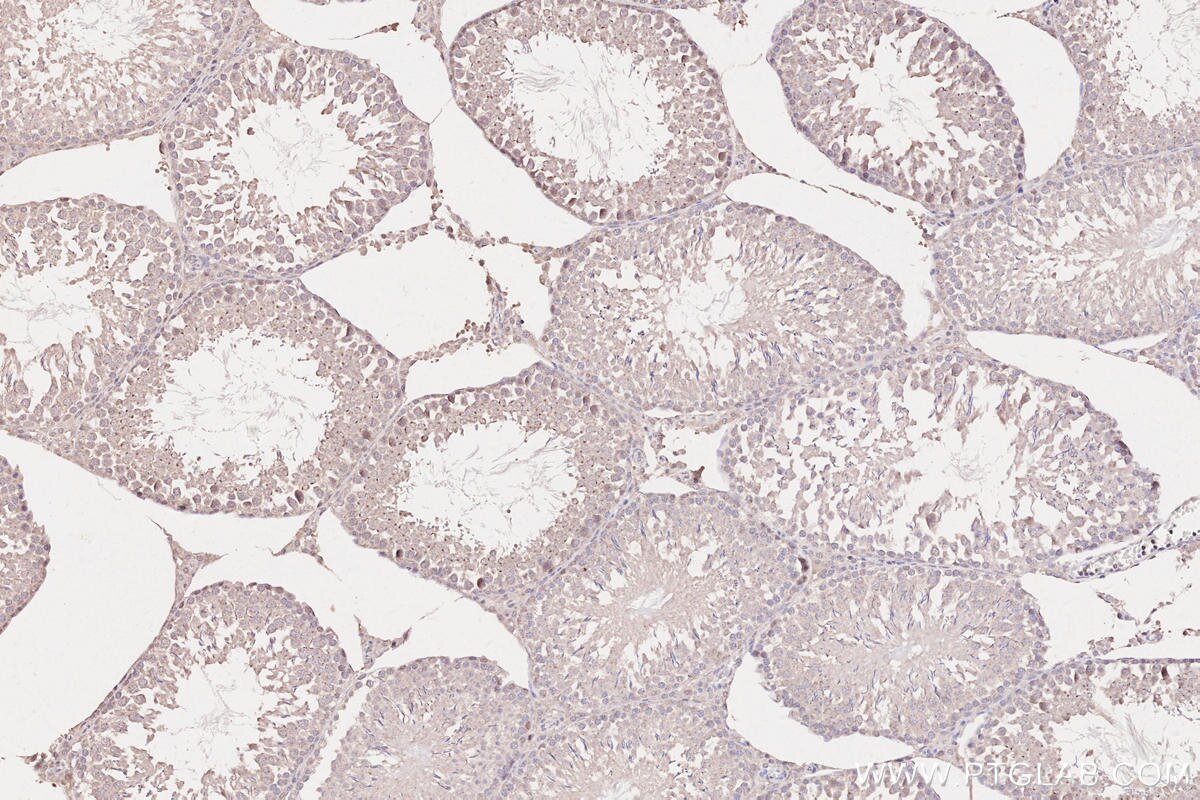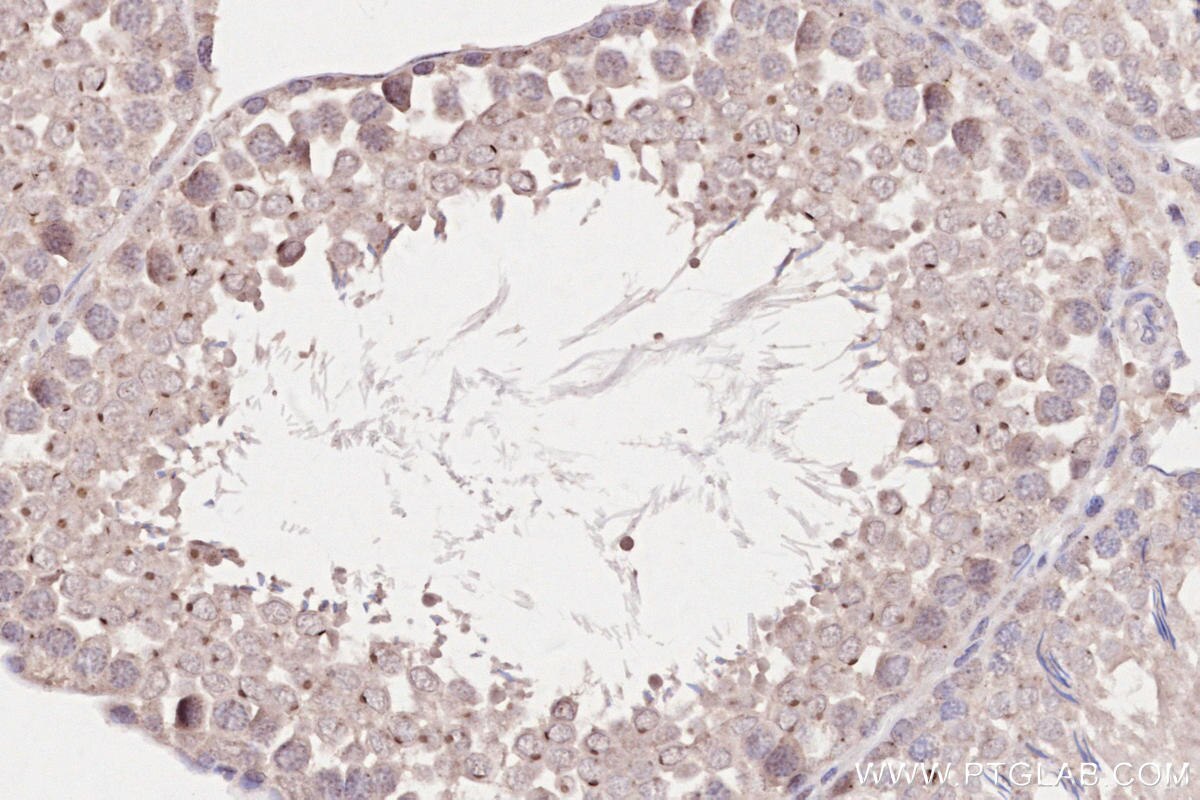WBP2NL Polyklonaler Antikörper
WBP2NL Polyklonal Antikörper für WB, IHC, ELISA
Wirt / Isotyp
Kaninchen / IgG
Getestete Reaktivität
human, Maus, Ratte
Anwendung
WB, IHC, IF, ELISA
Konjugation
Unkonjugiert
Kat-Nr. : 22587-1-AP
Synonyme
Geprüfte Anwendungen
| Erfolgreiche Detektion in WB | humanes Hodengewebe, Maushodengewebe |
| Erfolgreiche Detektion in IHC | Maushodengewebe, Maus-Eierstockgewebe, Ratten-Eierstockgewebe, Rattenhodengewebe Hinweis: Antigendemaskierung mit TE-Puffer pH 9,0 empfohlen. (*) Wahlweise kann die Antigendemaskierung auch mit Citratpuffer pH 6,0 erfolgen. |
Empfohlene Verdünnung
| Anwendung | Verdünnung |
|---|---|
| Western Blot (WB) | WB : 1:500-1:2000 |
| Immunhistochemie (IHC) | IHC : 1:50-1:500 |
| It is recommended that this reagent should be titrated in each testing system to obtain optimal results. | |
| Sample-dependent, check data in validation data gallery | |
Veröffentlichte Anwendungen
| WB | See 8 publications below |
| IF | See 4 publications below |
Produktinformation
22587-1-AP bindet in WB, IHC, IF, ELISA WBP2NL und zeigt Reaktivität mit human, Maus, Ratten
| Getestete Reaktivität | human, Maus, Ratte |
| In Publikationen genannte Reaktivität | human, Maus |
| Wirt / Isotyp | Kaninchen / IgG |
| Klonalität | Polyklonal |
| Typ | Antikörper |
| Immunogen | WBP2NL fusion protein Ag18347 |
| Vollständiger Name | WBP2 N-terminal like |
| Berechnetes Molekulargewicht | 309 aa, 32 kDa |
| Beobachtetes Molekulargewicht | 32 kDa |
| GenBank-Zugangsnummer | BC022546 |
| Gene symbol | WBP2NL |
| Gene ID (NCBI) | 164684 |
| Konjugation | Unkonjugiert |
| Form | Liquid |
| Reinigungsmethode | Antigen-Affinitätsreinigung |
| Lagerungspuffer | PBS with 0.02% sodium azide and 50% glycerol |
| Lagerungsbedingungen | Bei -20°C lagern. Nach dem Versand ein Jahr lang stabil Aliquotieren ist bei -20oC Lagerung nicht notwendig. 20ul Größen enthalten 0,1% BSA. |
Hintergrundinformationen
WBP2NL, also known as PAWP, is a protein found in the post-acrosomal region of mammalian spermatozoa. It was initially proposed as a sperm-borne oocyte-activating factor (SOAF) that triggers calcium oscillations essential for oocyte activation and embryo development. However, recent studies have shown mixed results regarding its role in fertilization. While some investigations suggest that PAWP can induce oocyte activation, others indicate that it may not be sufficient to compensate for the absence of other critical factors like PLCZ1. Additionally, altered WBP2NL expression has been observed in breast cancer tissues, hinting at its potential involvement in oncogenic regulation. (PMID: 24907910, PMID: 25417742, PMID: 28663133)
Protokolle
| PRODUKTSPEZIFISCHE PROTOKOLLE | |
|---|---|
| WB protocol for WBP2NL antibody 22587-1-AP | Protokoll herunterladen |
| IHC protocol for WBP2NL antibody 22587-1-AP | Protokoll herunterladenl |
| STANDARD-PROTOKOLLE | |
|---|---|
| Klicken Sie hier, um unsere Standardprotokolle anzuzeigen |
Publikationen
| Species | Application | Title |
|---|---|---|
Hum Mol Genet Homozygous mutation of PLCZ1 leads to defective human oocyte activation and infertility that is not rescued by the WW binding protein PAWP. | ||
Int J Mol Sci Comprehensive Flow-Cytometric Quality Assessment of Ram Sperm Intended for Gene Banking Using Standard and Novel Fertility Biomarkers. | ||
Development PLCζ is the physiological trigger of the Ca(2+) oscillations that induce embryogenesis in mammals but offspring can be conceived in its absence. | ||
Mol Hum Reprod Functional disparity between human PAWP and PLCζ in the generation of Ca2+ oscillations for oocyte activation. | ||
Mol Hum Reprod Antigen unmasking enhances visualization efficacy of the oocyte activation factor, phospholipase C zeta, in mammalian sperm. |
